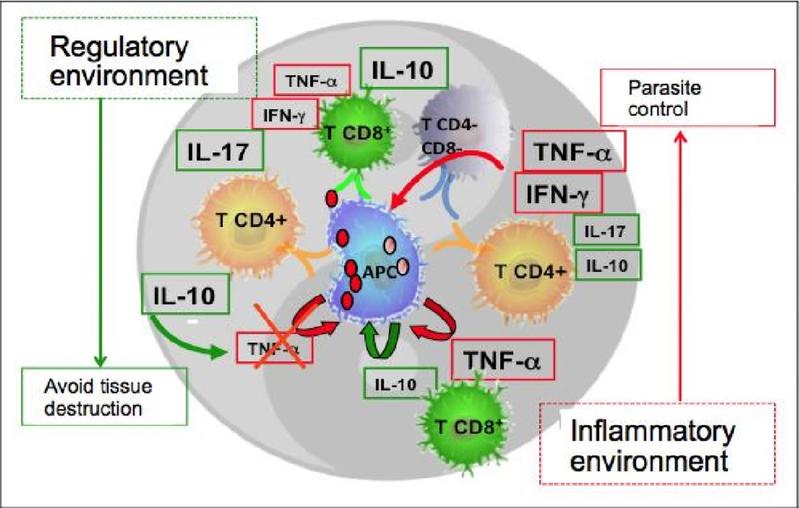Walderez Dutra

Professor of Cell Biology Dept. Morphology, Federal University of Minas Gerais, Belo Horizonte, Brazil Tel: +55-31-99102-1930 Email: waldutra@gmail.com
VALIDATE Role: Network Investigator
Research Keywords: Leishmania, T-cells, immunoregulation, immunopathology,
Biography:
Our laboratory has been studying the cellular and molecular mechanisms involved in the differential clinical evolution of human diseases, focusing particularly on Chagas disease and American tegumentary leishmaniasis, two neglected tropical parasitic diseases caused by intracellular protozoans parasites, against which there are no vaccines available. We focus our studies in immunoregulatory networks in Chagas disease and leishmaniasis, to identify markers of disease progression, as well as of protective responses, to instruct much needed alternative therapies and preventive measures. We use a series of cellular, molecular and genomics tools to address our questions. Both T. cruzi and Leishmania sp. directly interfere with the immune response, as they parasitize macrophages and other antigen-presenting cells. While infection triggers an inflammatory response, which is needed to eliminate the parasites, the subsequent control of this initial response is needed to avoid tissue destruction and pathology establishment. The inability to perform such immunological control has been associated with the establishment of severe forms of these diseases. Thus, identifying the mechanisms involved in the triggering and control (or lack of it) of the immune response is key for disease prevention and for interfering with disease progression.
Recently, our laboratory has identified target genes involved in the development of pathogenic forms of Chagas disease. In addition, we have identified cell populations and cytokines associated with pathology in Chagas disease and leishmaniasis, pointing to biomarkers of disease progression, as well as treatment efficacy. Some of these findings have helped in designing alternative therapies, which have shown efficacy in severe and resistant forms, emphasizing the translational approach of our research. While continuing our research, we now hope to use the results obtained over the years to form a robust database for modelling of the immune response associated with these diseases, bringing new insights to the understanding of disease dynamics, progression and susceptibility. 
The yin/yang of immunoregulatory networks. This figure depicts the involvement of cytokines, produced by specific cell populations, in the development of Chagas disease and tegumentary leishmaniasis. Upon infection, it is important to produce inflammatory cytokines such as IFN-gamma and TNF-alpha, which will activate macrophages to kill the intracellular parasites. If the initial inflammatory environment is controlled by the expression of anti-inflammatory cytokines such as IL-10, this may lead to a balanced response, and the maintenance of mild clinical forms. However, the inability to further control the initial inflammatory response seems to be associated with the establishment of severe clinical forms of the diseases. Dissecting the mechanisms that underlie these interactions emerges as a key aspect to interfere with disease progression and severity. Related Websites:
Key Publications: Léa C. Castellucci, Lucas Almeida, Svetlana Cherlin, Michaela Fakiola, Edgar Carvalho, Amanda B. Figueiredo, Clara M. Cavalcanti, Natalia S. Alves, Walderez O. Dutra, Kenneth J. Gollob, Heather J. Cordell, Jenefer M. Blackwell A genome-wide association study highlights a regulatory role for IFNG-AS1 contributing to cutaneous leishmaniasis in Brazil. 2020 doi: https://doi.org/10.1101/2020.01.13.903989 in BioRxiv. |


